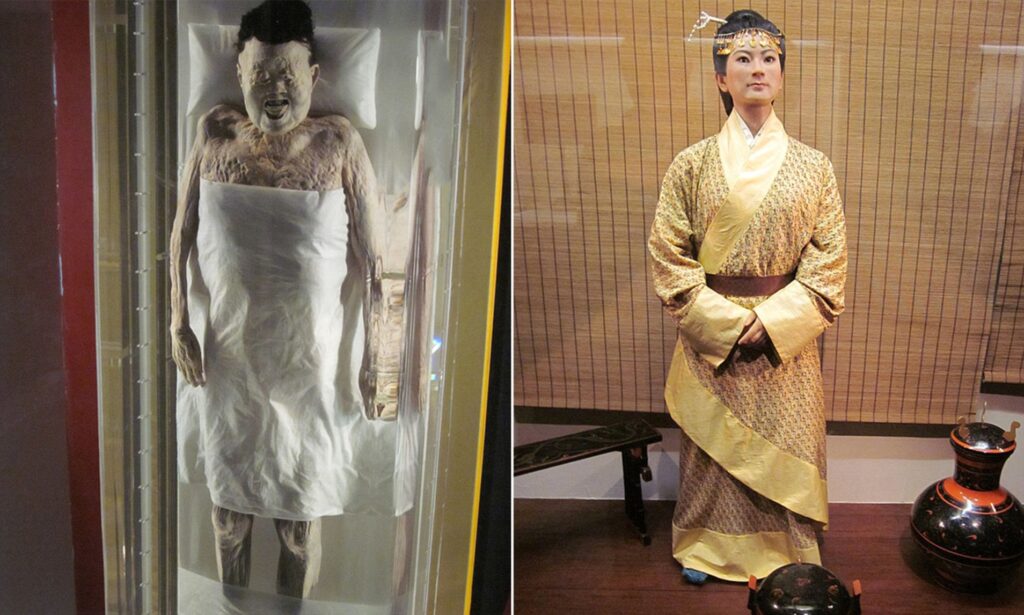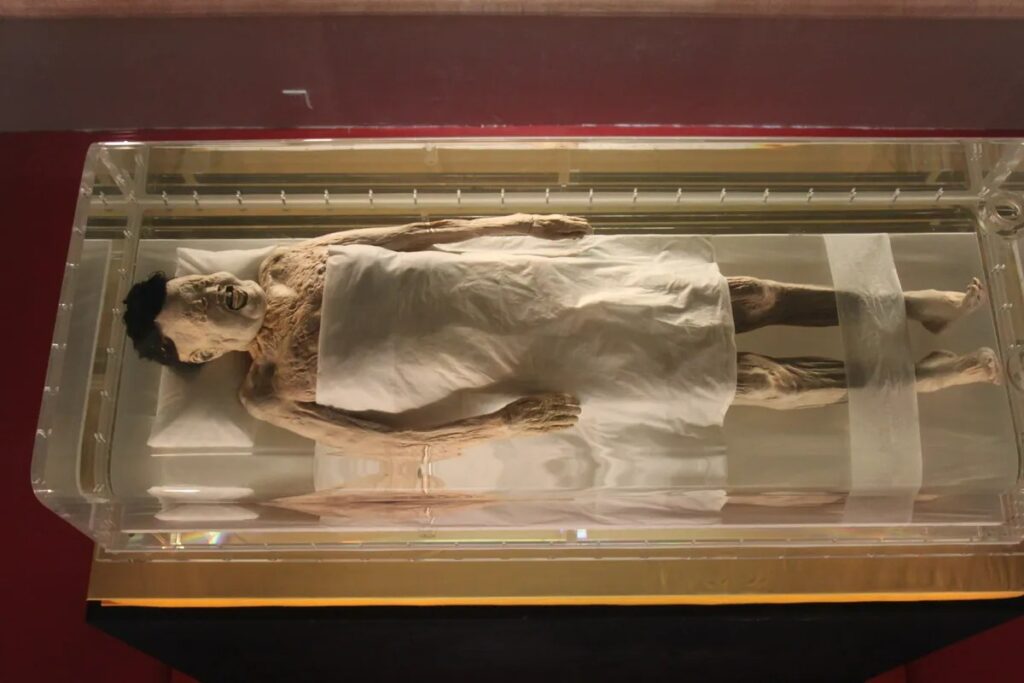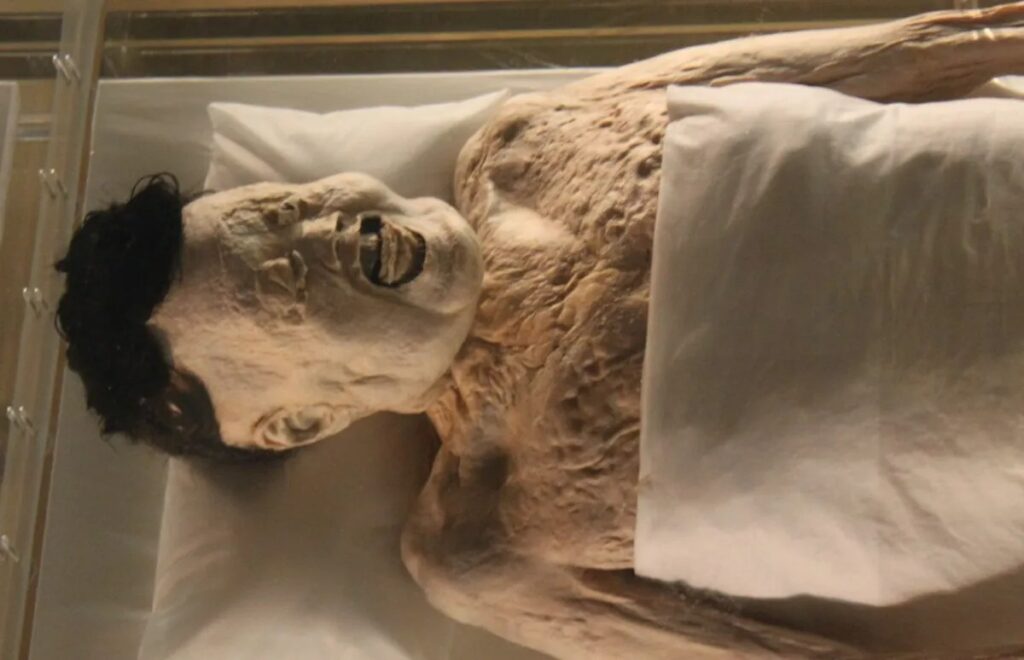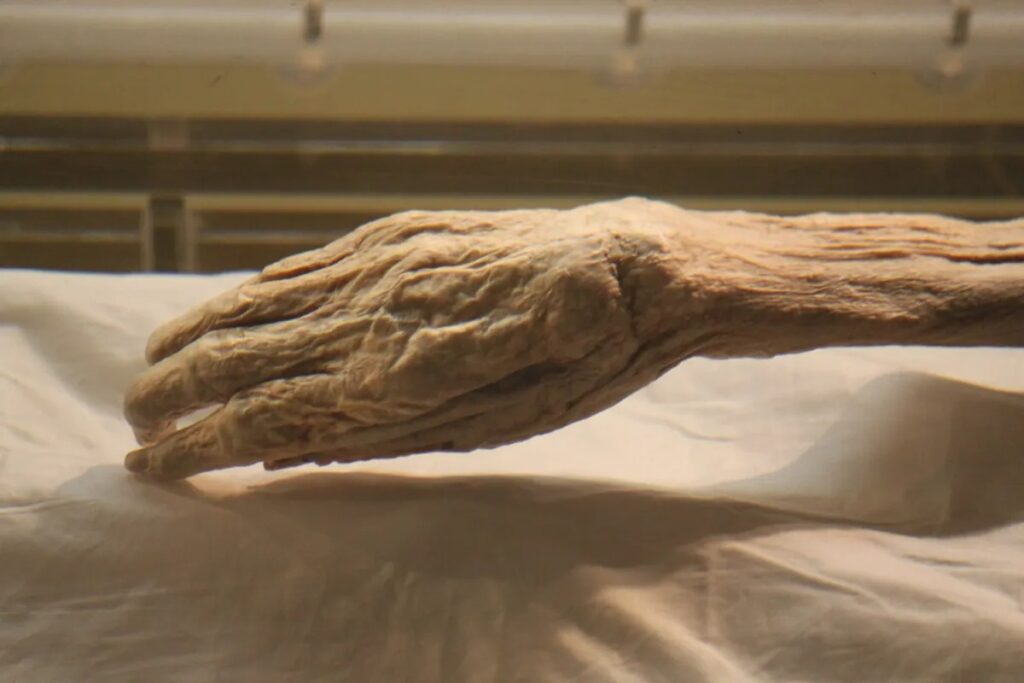
In the world of ancient mysteries, few enigmas rival the astounding preservation of Lady Dai’s mummy. At an astonishing age of over 2,100 years, Lady Dai is often referred to as “China’s Sleeping Beauty.” She may indeed look remarkably well-preserved for her age, but scientific examinations have unveiled the tale of a noblewoman whose opulent lifestyle ultimately took a toll on her health.

The journey to the discovery of Lady Dai’s tomb began when construction workers stumbled upon it accidentally in the 1960s in Mawangdui, near Changsha, China. Subsequently, a team of dedicated archaeologists, aided by hundreds of school children, embarked on the meticulous excavation of the site in the early 1970s. What they unearthed was nothing short of extraordinary: three tombs dedicated to the illustrious family of Li Cang, the Marquis of Dai, a nobleman of significant influence during the Western Han dynasty (206 BCE – 9 CE).
One of these tombs held the remains of Lady Dai, also known as Xin Zhui, who had passed away in 163 BCE. Alongside her, a trove of thousands of artifacts from the ancient Han dynasty was discovered. Among these treasures were delicate silk manuscripts, lacquered vessels, and herbal medicines infused with aromatic ingredients like cinnamon, magnolia bark, and peppercorns.

Intriguingly, a third tomb contained the remains of a younger man, possibly Lady Dai’s son or brother. However, unlike Lady Dai, both Li Cang and the young man had succumbed to the inexorable march of time, their remains deteriorating over centuries.
Lady Dai, on the other hand, defied time itself. Her mummy, now more than 2,100 years old, remains in an astonishing state of preservation. Her veins still course with congealed blood, and most of her soft tissues have remained remarkably intact. Her wrinkled form appears more akin to a recently deceased individual on a modern mortuary table than an ancient mummy from a bygone dynasty.
What accounts for the incredible preservation of Lady Dai’s remains? Clues can be found in the meticulous care bestowed upon her during her burial. Archaeologists discovered her cocooned within the innermost of four lacquered coffins, draped in a resplendent silk painting. To further safeguard her from external forces of decay, she was adorned in a staggering 18 layers of silk and linen clothing.

Another intriguing element was the coffin’s contents—an enigmatic clear liquid that turned brown upon exposure to air. While some believe this to be Lady Dai’s bodily fluids, others speculate it might have been a traditional Chinese herbal solution, possibly contributing to her preservation.
Chinese scientists conducted a detailed autopsy, revealing that this noblewoman had suffered from poor health. She appears to have succumbed to a heart attack around the age of 50, shortly after a meal. This, researchers speculate, was likely the result of her indulgent and sedentary lifestyle, which had led to obesity and diabetes.
“As judged from her richly furnished tomb and the fact that she was a noblewoman with many servants waiting on her, she probably did not need to exert herself,” noted one Chinese scientist.

The autopsy also unveiled Lady Dai’s final meal, a fascinating detail that offers a glimpse into her last moments. Her esophagus and stomach contained over 100 musk melon seeds, suggesting she had consumed them in great haste.
Today, Lady Dai’s mummy is housed at the Hunan Provincial Museum, where it garners visitors from around the world, intrigued by the possibility that this ancient woman may hold the secret to longevity. Gazing upon her remarkably preserved remains, it’s easy to understand why her story continues to captivate and mystify.

Leave a Reply